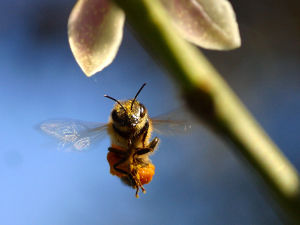Editorial: Imidacloprid Under Fire

European farmers will lose an estimated $3.8 to $5.2 billion in incomes each year as a result of lower yields and increased costs associated with controlling pests that neonicotinoids had previously controlled.
The onslaught on neonicotinoids intensified in July as European factions continue to employ hazard-based hyper-caution in regulatory decisions around the class of insecticides. Neonicotinoids are suspected in the decline of non-target species, most notably honeybees. Although no definitive studies conclude that neonicotinoids are the root cause of the decline of non-target species, the EU has suspended their use based on the precautionary principle.
The first development came when Syngenta withdrew its application for emergency-use status of imidacloprid on canola in the United Kingdom. UK regulators took more than a month to rule on the request. In a statement, Syngenta said the decision came too late for it to furnish farmers with treated seeds in time for their planting schedule.
Neonicotinoids make up a vast majority of seed treatments; almost three-quarters of all seed treatments use a neonicotinoid, the largest crops being canola, wheat, soybeans and corn. The class constitutes about $2.5 billion in global sales, about 5% of the global agriculture chemical market.
In another development that will redouble scrutiny on the class, the journal Nature published a report authored by ecologists at Radboud University and the Sovon Centre for Field Ornithology that implicates imidacloprid in the decline of bird populations. The Netherlands-based researchers studied the effect that surface water contamination had on 15 bird species, and found:
“At imidacloprid concentrations of more than 20 nanograms per liter, bird populations tended to decline by 3.5% on average annually. Additional analyses revealed that this spatial pattern of decline appeared only after the introduction of imidacloprid to the Netherlands, in the mid-1990s.”
Similar to myriad honeybee studies circulating today, this new bird study is just a theory. More than half (eight of 15) of the bird populations studied are either stable or have increased. That means this study could have been interpreted to mean that imidacloprid had no effect on some bird populations, which is the case in the majority of the species studies.
The authors further concede that they are unsure why bird populations are declining, that is, whether imidacloprid could be killing the birds directly or whether there are just fewer bugs to eat. Essentially, they have no idea why seven of the 15 bird species declined from 1990-2005. They found only that, “in the Netherlands, local population trends were significantly more negative in areas with higher surface-water concentrations of imidacloprid.” This, of course, was their original hypothesis and what they were trying to prove.
The correlation might be significant. But without studying other environmental factors, we simply don’t know. That is the biggest fear surrounding the hyperbole about the birds and the bees: Lay people react emotionally and intuitively to these studies instead of evaluating the rigors of the scientific theory behind them. Hundreds of news outlets picked up the Nature story, and they will walk away thinking that pesticides are toxic to the environment.
There is another side to this story: European farmers will lose an estimated $3.8 to $5.2 billion in incomes each year as a result of lower yields and increased costs associated with controlling pests that neonicotinoids had previously controlled. A neonicotinoid economic loss study, which was supported by the European Seed Assn. and the European Crop Protection Assn., also predicted that 22,000 jobs will be lost in the first year. Over the span of five years, farm incomes would drop almost 5%, and ultimately, Europe will need to increase its food imports to counterbalance its lost production.






